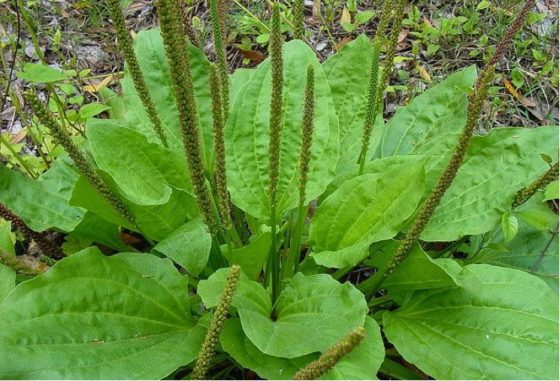
TRUMP SAYS: HUNTER MAKES FORTUNE FROM SHADY DEALS!
BIDEN FAMILY STINKS TO HIGH HEAVENS OF CORRUPTION!
DON'T GET LEFT OUT: HUNTER MUST BE STOPPED!

This article was originally published by Zoey Sky at NaturalNews.com

Foraging is a useful skill to have because it can help you identify wild edibles. It’s even more valuable when SHTF because it can help you stay alive if you lose your survival gear and food supplies. (h/t to BioPrepper.com.)
Once things have settled down after a disaster, assess your needs. Your first priority is to locate food, and knowing how to find edible plants can help solve this problem.
Tips for finding wild edibles
Keep these general tips in mind when foraging for edible plants:
100% organic essential oil sets now available for your home and personal care, including Rosemary, Oregano, Eucalyptus, Tea Tree, Clary Sage and more, all 100% organic and laboratory tested for safety. A multitude of uses, from stress reduction to topical first aid. See the complete listing here, and help support this news site.
Other general signs to avoid in plants include:
The Universal Edibility Test
Many plants are poisonous, and eating a toxic plant can cause reactions that range from relatively mild, like vomiting, to severe ones like a coma, organ failure, or even death. A reliable method that you can use to determine if a plant is safe to eat is the “Universal Edibility Test” (UET), which was developed by the U.S. Army.
The tips below are from the U.S. Army Survival Manual FM21-76. Take note that some experts don’t believe that this test is effective since some plants may cause serious adverse reactions from skin contact.
Always carry a field manual when foraging and use the UET as a last resort. Fast for eight hours before testing a plant, and choose something abundant, so you don’t waste your time and risk your life for something that won’t even keep you full.
Not all parts of a plant can be poisonous. To illustrate, a plant with poisonous leaves may have edible roots and stalks. Take the plant apart into its main components for the UET.
Skin contact test
Chew test
The bigger bite
When testing plants, remember that a plant can taste bad or bitter even if it’s edible. If you’re starving in the wild, you can’t afford to be fussy. Younger wild edibles won’t be as bitter and the more mature the leaf, the more bitter it will generally taste. You can boil plants to reduce the bitterness, but some plants might need to be boiled several times.
The “Rule of threes”
Remember the “Rule of threes:”
You also need to prioritize your immediate safety. Stay calm so you can act quickly and escape from a burning home or sinking vessel.
This article is no substitute for a field guide. Before eating or testing an unknown plant, use your common sense and follow the general guidelines from the UET discussed above when searching for wild edibles.
You can learn more about how wild edibles and foraging at FoodSupply.news.
Sources include:

It Took 22 Years to Get to This Point
Robert F. Kennedy Jr. has claimed to be ready to lock up Bill Gates, Dr. Anthony Fauci, and every...
This article was originally published by Rhoda Wilson at The Exposé under the title: Philippines...
This article was originally published by Ethan Huff at Natural News. Houthi rebels in Yemen...
This article was originally published by Cassie B. at Natural News. A Dutch government official...
Commenting Policy:
Some comments on this web site are automatically moderated through our Spam protection systems. Please be patient if your comment isn’t immediately available. We’re not trying to censor you, the system just wants to make sure you’re not a robot posting random spam.
This website thrives because of its community. While we support lively debates and understand that people get excited, frustrated or angry at times, we ask that the conversation remain civil. Racism, to include any religious affiliation, will not be tolerated on this site, including the disparagement of people in the comments section.


I planted edible flowers in an herbal garden. Without my knowledge, the gardener planted a few more flowers ? pretty but definitely not edible. Ate them and had a very sore throat. ????
_
_
“U.S. Army Survival Manual FM21-76.”
is 106 pages not something you would normally carry around in your bugout bag.
First page is probably the most important.
And the best advice is don’t panic and remember the rule of threes.
What a timely article…. Just in time to learn how to eat bark twigs and nuts just like deer and squirrels. Leave the furballs alone. They are the Sheriffs animals, you nasty peons.
I don’t know about you guys, but “long-pig” would start looking pretty good if it comes down to eating dandelions or starvation? Solent Green anyone?!?!
I’m kidding?
But seriously, my desire to avoid starvation is why I prep. I went to Walmart today and bought 26 boxes of Chocolate Brownie Mix and 48 small boxes of Jiffy brand corn bread.
I’ve never stored something this way before, but I kept the cornbread in its paper packages and jammed them inside a half gallon Mason Jar. I then put an oxygen absorber in and vacuum jar sealed it.
It so nice to be able to start storing comfort food in bulk, both because I have the staples covered; but also because I think we are getting close. So even if they don’t store as well or long that’s okay.
This is what I don’t understand. Ms. Sky wrote an article that failed to identify the photo. I did that in my comments. She detailed a way to acquire a scant amount of calories that would not support life. I wrote detailed brief practical instructions that would save your life.
Why in the world would you suppress my comments? They disparage no one. They provided ancient ancestral pragmatic wisdom. They were not only valid, but it’s the same kind of information you would get in any excellent survival school and at great expense.
It’s weird.
I see this, alot, and could stand to take a break from monitors, personally.
I will gratefully help anyone in good faith. I want to know that, first.
Broad leaf plantain
https://www.ediblewildfood.com/broadleaf-plantain.aspx
Great site for edible weeds
http://www.eattheweeds.com/?s=Plantain
ht tps://youtu.be/MCSsVvlj6YA
https://youtu.be/MCSsVvlj6YA
There are probably two or three plants in any given area of the country that are worth foraging, that will help you survive during the growing the season and offer the potential of being stored in the winter. Learn those plants, how to collect and process them, anything else is a waste of time.
One way to get started is to familiarize yourself with just one thing, directly under your nose, right where you are at.
Everything has some industrial value, not all of which are realized.
I’m glad the Alone tv series raised awareness and is fostering a new generation of folks interested in bushcraft. Otherwise these wild edible foraging skills are almost totally lost. Military SERE training can never impart good bushcraft skills as it’s not intended to live off the land, but to find things to nibble on to psychologically maintain morale and get back to the unit and base.
The most important lesson is to NOT waste calories foraging unless the caloric intake exceeds what is used in gathering it. 95% that is not going to be a plant but a fish or mammal protein source. The exception is typically a nut like the common acorn or hickory nut.
If it has 35 calories per cup, how many cups must you collect to sustain life? See? This is netting fish or trapping small game as it takes almost no effort. You can die wasting calories gathering low yield plant calories.
You have largely missed the window for meadow plants but in autumn many valuable wild edibles nuts can be identified, prepared, and tasted.
Our ancestors would watch and take note of wild edible plants and WHEN they can be harvested. Some were medicinals and some conveyed protection nutrionally. Those who ate some, did better than others when ill. Think iron, calcium, vitamin C and K especially but also B vitamins.
Now this means harvesting during that window and PRESERVING them, typically by drying. This was especially important for medicine as winter would obscure and wither the plant until the following year.
So it’s not enough to identify the plant, but prepare ahead of time and harvest before you need its valuable attributes. Now with cooler temperatures and winter approaching, this is a crucial lesson.
You collect the wild edible, and that includes animal proteins, so they sustain you through the lean period. Locally that lean period is from Thanksgiving until early March. But elsewhere that window could be elongated by cooler average temperatures or elevation or rainfall or length of adequate sunlight.
Few plants can sustain you locally from March to the end of May. The serious abundant crops with higher calories largely grow from June through October.
You could get into a situation where there are lots of wild edible plants, but they ALL are low calorie based upon when you are trying to harvest them.
Once it’s getting cold, the animals will burrow and go dormant to try to survive. The fish will seek lower water. Foolish unprepared people with no cache of food died in history. What typically happened was they made a last desperate dash to find something to hunt and perished using their last energy reserves.
Agriculture means a concentrated food source from known plants producing abundant nutrition that stores well. Never think you can just live off the land. That is largely a fallacy.
In the way of taking baby steps, and little bites — besides just learning about one weed, the first thing underfoot — I would say to substitute just one ingredient, in an ordinary recipe.
We ate game meat in normative, American foods.
But, this also works for plants.
It passes for just-plain, everyday food, if you only make one substitution or one addition. It’s doesn’t have to be some bizarre slop or goulash. Make it normal.
If you mean to make a bread or pastry or pasta, do not substitute more than 1/2 wheat flour, as rising and consistency, etc, require wheat gluten. If you were a health foodie, this stretchy, gluey-ness can be approximated with eggs, gels, or mucilaginous plants.
ID, thoroughly, as though your life depends on it —
https://www.neatorama.com/2016/09/12/Jimsonweed-and-Jamestown/